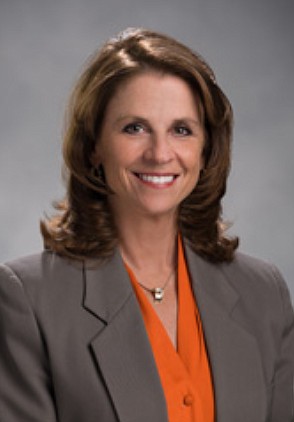Fight to save open space could include park-like package
COEUR d'ALENE — Local leaders met Tuesday to take their next collective steps forward in an effort to address growth, where an interesting idea with something of a track record emerged.
During a briefing from Kiki Miller about the aftermath of the first Partnership survey held in late April and early May, the Coeur d’Alene councilwoman shared locals’ thoughts on which issues should be prioritized. One of the key issues that ranked high across the area’s demographics was the problem of dwindling open space, particularly on the Rathdrum Prairie. She then recited the story of a similar desire to preserve a large chunk of open space in Coeur d’Alene, once upon a time in 1974.
“The people wanted this space saved for public use,” Miller said. “What the people did was, they formed a foundation called the Tubbs Hill Foundation. They raised money from the community, and they (awarded) it to the city.”
Miller said that she has informally reached out to the owners of some of the larger acreage on the Rathdrum Prairie to gauge their interests in selling, with mixed-but-generally-positive results.
“The easiest step from A to B is to have it purchased and agree to have the citizens fund it as a park,” Miller said.
A public space on the high-demand Rathdrum Prairie is one option among many, but Miller said the Partnership is wary of exploring every option, as the citizens who took part in the survey indicated that legislative solutions at the state level should be deprioritized. It’s an early growing pain Miller said the Partnership will have to eventually figure out.
“That’s telling us the hand and the glove aren’t working well together right now,” she said. “We’re going to have to find that balance, but we have to respect the voice of the citizens on this and be mindful moving forward.”
The Partnership also heard a brief presentation from Glenn Miles, executive director of the Kootenai Metropolitan Planning Organization, about the transportation issues the city will face in the future. Among the points Miles brought up was the nature of the area’s transportation infrastructure, and how it will need upgrades in the years to come.
“We’re running on a legacy transportation system,” Miles said. “… It’s getting tired. It’s not meeting our current needs.”
The burden of the area’s transportation network — namely our roads — are highlighted for all to see on both U.S. 95 south of town and along Interstate 90 whenever an obstruction like an accident occurs, Miles pointed out. It’s a dilemma Miles said Kootenai County will have to face even if the area’s growth rate is reduced to zero.
Miles’s presentation explained how the area will see north of $230 million in transportation projects over the next six years, projects designed to improve the flow of traffic in the long run but will also cause congestion in the short term, all while North Idaho's population increases.
“Some are saying, ‘You’re pro-growth,’” Miles said. “I’d say, ‘We’re pro-active.’”
As the Partnership continues to look at options, advisory sub-groups will explore local worker housing partnerships, all while local jurisdictions continue to look at how their own code is impacting the housing market.
As for the notion of protecting the area’s open space, Miller said even a group as well-networked and well-intentioned as the Partnership can’t solve growth alone.
“There are things that can be done to address the preservation of open space,” she said. “But it’s going to take a much larger community effort, if that’s what the community wants, and it’s going to take all of us working together.”

